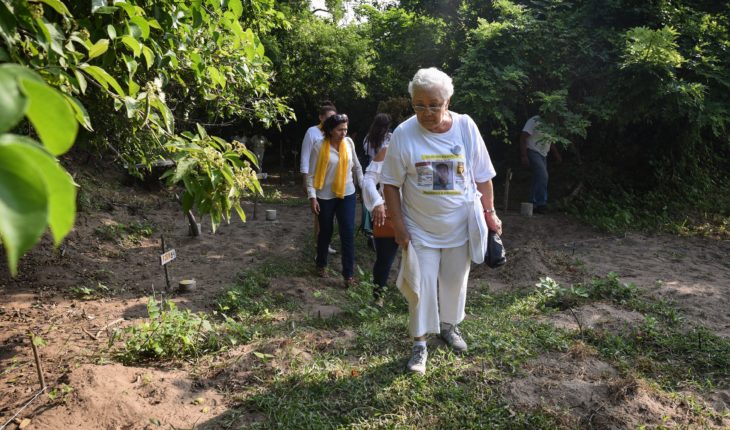The missing persons moms who found Mexico’s largest clandestine grave in Veracruz closed a search chapter and started others because they continue to receive credible evidence from more clandestine cemeteries where their relatives might be.
This Thursday the sole Solecito Veracruzano ended its search in the Colinas de Santa Fe site, located in the vicinity of the main entrance of the Port of Veracruz, the most populous city of that state, very close to where thousands of cars pass every day.
Read more: Six municipalities concentrate 52% of bodies found in clandestine graves, study reveals
Three years ago they received information pointing to the existence of the graves on that site and, despite the resistance they faced with the authorities, they managed to check the existence of 298 skulls and 22,500 human remains in total.
They achieved the identification of 22 people, there is the hope that five remains will be identified and the certainty that 50 skulls will not be identified because it was not possible to extract DNA samples from them. “It’s a sense of feelings crossed, we didn’t find many of us we needed to find,” said Lucía Díaz Genao, a member of Solecito Veracruzano.
You may be interested: Relatives of missing people accuse that Yunes does not allow them to search for more pits in Santa Fe Hills
At first, when the mothers of the disappeared obtained clear information pointing to the existence of the pits, they only got the authorities in Veracruz to give them access to the property of Colinas de Santa Fe but “never investigated anything,” Diaz said.
Finally, the research work was carried out by the Federal Scientific Police and was finally concluded this Thursday morning with the celebration of a mass in which the mothers and other organizations such as Serapaz and the National Commission of Human Rights.
A three-year chapter was closed, which, to say Lucia Díaz, was equivalent to 15 for the personal cost that each of the mothers had to pay.
“It took a lot of time, a lot of effort and also the misasting that we are getting used to seeing human bodies. Having to see remains, know that they’re all there. Life changed us radically.
We were filled with images and situations that we would have preferred not to have to go through, we would like to think that it is a nightmare and that we woke up. But we never woke up from this nightmare,” said the mom and activist.
The closure of Colinas de Santa Fe marks the beginning of another episode that begins on the other side of the Xalapa-Veracruz highway, on a site even closer to the city of Veracruz known as kilometer 13.5, in the vicinity of the port area of the city. “Hill closes but the work is not finished, we’re still the same.”
Read more: Facts about clandestine pits in Colinas de Santa Fe should be public: judged
In addition to that “big” point, there are other places where the Solecito Veracruzano will go looking for their missing relatives. They already have a work plan and will follow it despite any cost.
“The force we take it out of the same children, to know that they are waiting for us, that they need us, that they count on us, that we are the only thing they have. We can’t let them down. Even if our lives go away, we’ll go on, they can’t look bad. We promised them we would look for them until we found them,” Lucia Diaz said.
A Fifth Element Lab investigation revealed this year that nearly 2,000 clandestine graves have been found in the country between 2006 and 2016. During those 10 years, 2 thousand 884 bodies were recovered, of which only one thousand 738 have been identified.
Veracruz, with 332, is the state where the most graves have been found in that period, and the Hills of Santa Fe is the largest of all so far.
What we do in Animal Político requires professional journalists, teamwork, dialogue with readers and something very important: independence. You can help us keep going. Be part of the team.
Subscribe to Animal Politician, receive benefits and support free journalism.#YoSoyAnimal
translated from Spanish: close Santa Fe Hills, start more pit searches
August 9, 2019 |





